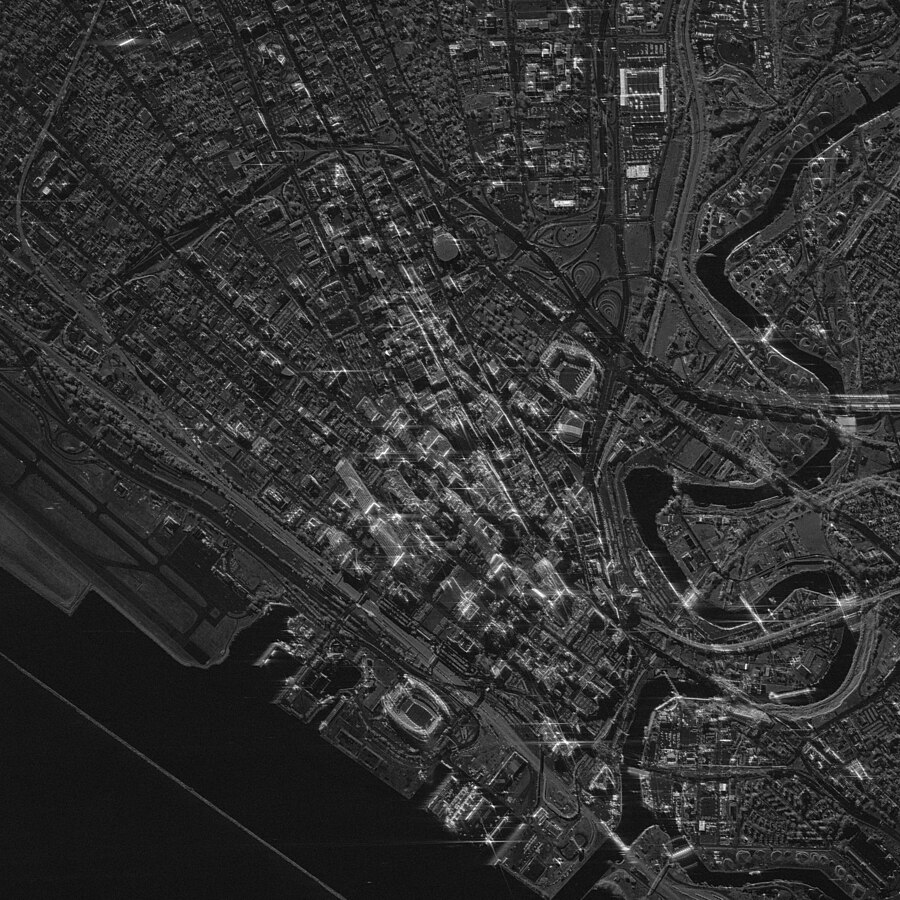
Special Day, Awesome Event: Geoawesome Munich 1st Meetup 2024
What day comes once every four years? February 29!
Which event pops up twice a year? The Geoawesome Munich Meetup!
In 2024, The Geoawesome Munich community got together for their first meetup on that extra day, February 29. The event brought together around 65 passionate geospatial lovers, 18 cheesy pizzas, and 6 packs of cool drinks.
The evening kicked off with an introduction by our host Sara. We had a wonderful lineup of speakers, all gurus from the geospatial world, sharing knowledge and sparking conversations.
EOMAP: Can you find the plastic in satellite imagery? We can!
Our first speaker is Stefan Mühlbauer, Project & Product Manager at EOMAP. Stefan introduced the company EOMAP’s ambitions to revolutionize the detection and monitoring of plastic debris. The innovative initiative ‘Eyes on Plastic’ grabbed everyone’s attention immediately.
They’re using satellite data, artificial intelligence, and help from people everywhere to find where the plastic’s piling up, from rivers all the way to the sea. With their clever tools that blend satellite images and brainy algorithms, spotting plastic floating in the ocean is getting a whole lot clearer.
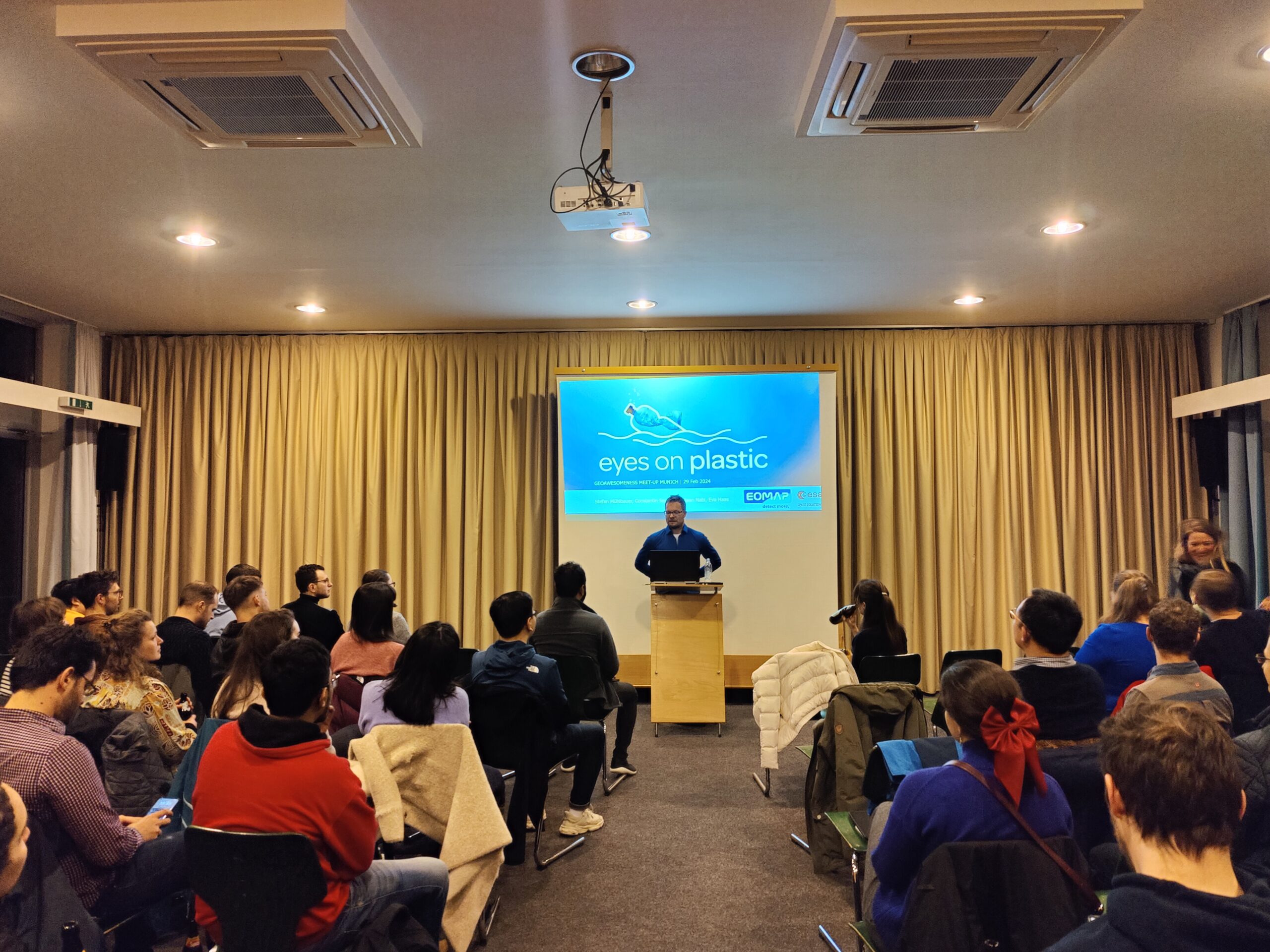
Geoawesome Munich 1st Meetup 2024
World Bank: User-friendly tools for heat hazard assessment
Ka-Hei Chow, the speaker from the World Bank, gave us a talk about the Google Earth Engine application in EO-Based Heat Hazard Assessment. She highlighted the Country Climate and Development Report (CCDR), which integrates climate risks into developmental planning. Ka-Hei emphasized the current challenges in data resolution and vulnerability analysis, pointing out the need for up-to-date, high-resolution data combined with demographic information to enhance the accuracy of hazard assessments.
The workshop also explored the development of user-friendly tools within the Google Earth Engine platform, which includes components such as a Data Download Tool, Data Analysis Tool, and Map Comparison Tool, to facilitate better decision-making and communication among non-technical users. These tools are designed to simplify the complexity of climate risk visualization, offering standardized, cloud-based solutions for district-level analysis, and enabling on-the-fly data processing for comprehensive project planning.
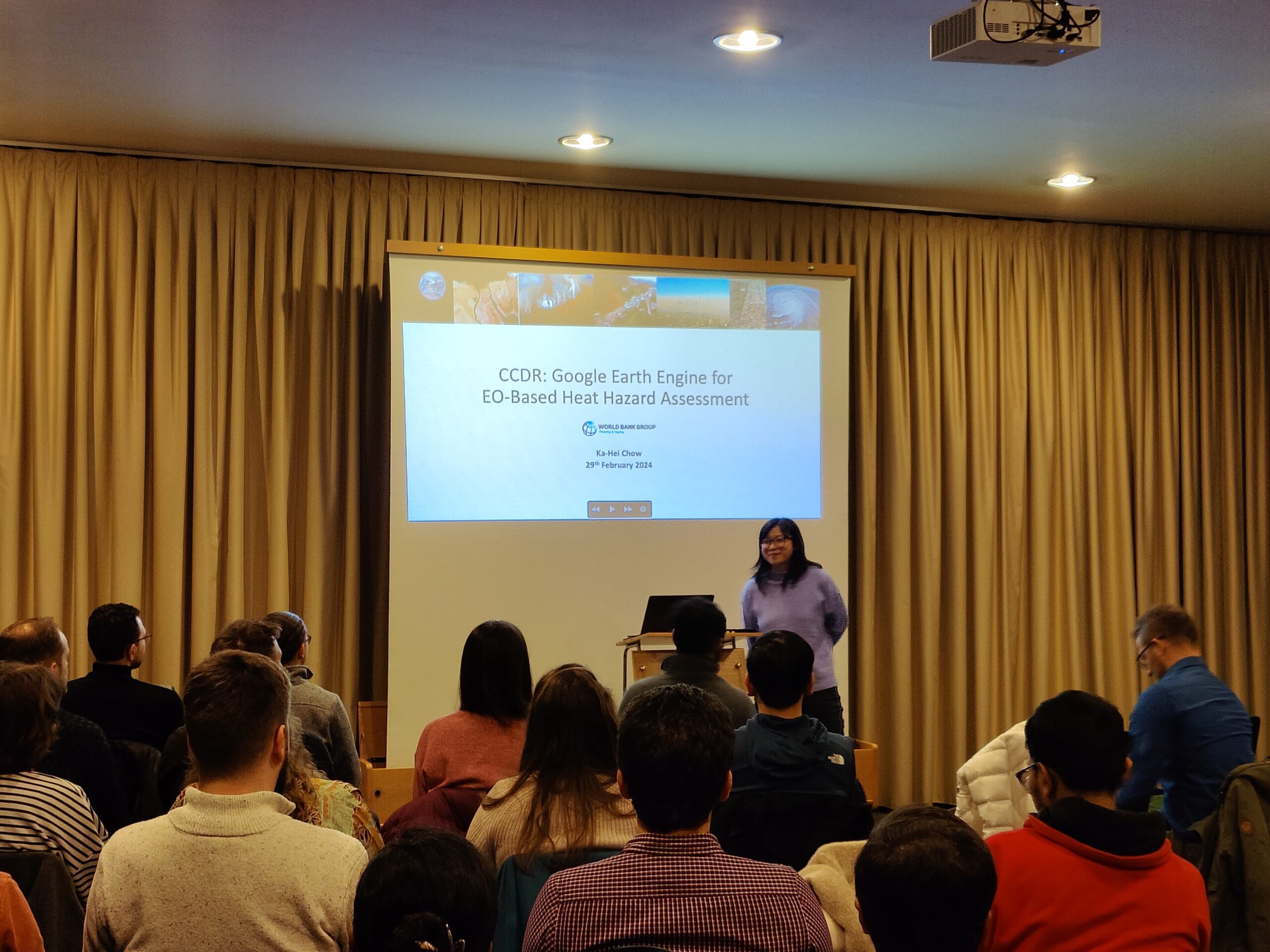
DLR ZKI: Here we are, before, during, and after the crisis
The presentation by Johanna Roll underscored ZKI’s extensive experience with over 700 activations, offering a window into their operations which span from preemptive crisis information to post-disaster analysis. ZKI, a branch of the German Aerospace Center (DLR), has developed a robust framework for utilizing remote sensing data, providing crucial insights before, during, and after crises. Celebrating two decades of pivotal contributions to crisis management, the Center for Satellite Based Crisis Information (ZKI) continues to be a beacon of innovation and support in times of need.
With advanced rapid mapping workflows and an improved system that incorporates 24/7 monitoring from various data sources, including social media, ZKI’s capabilities exemplify the fusion of technology and expertise. Their work in Germany’s flood assessment and the visualization of floodplains in Pakistan showcases their commitment to delivering precise and actionable information to governmental and civil bodies, strengthening resilience and aiding in efficient disaster response and recovery.
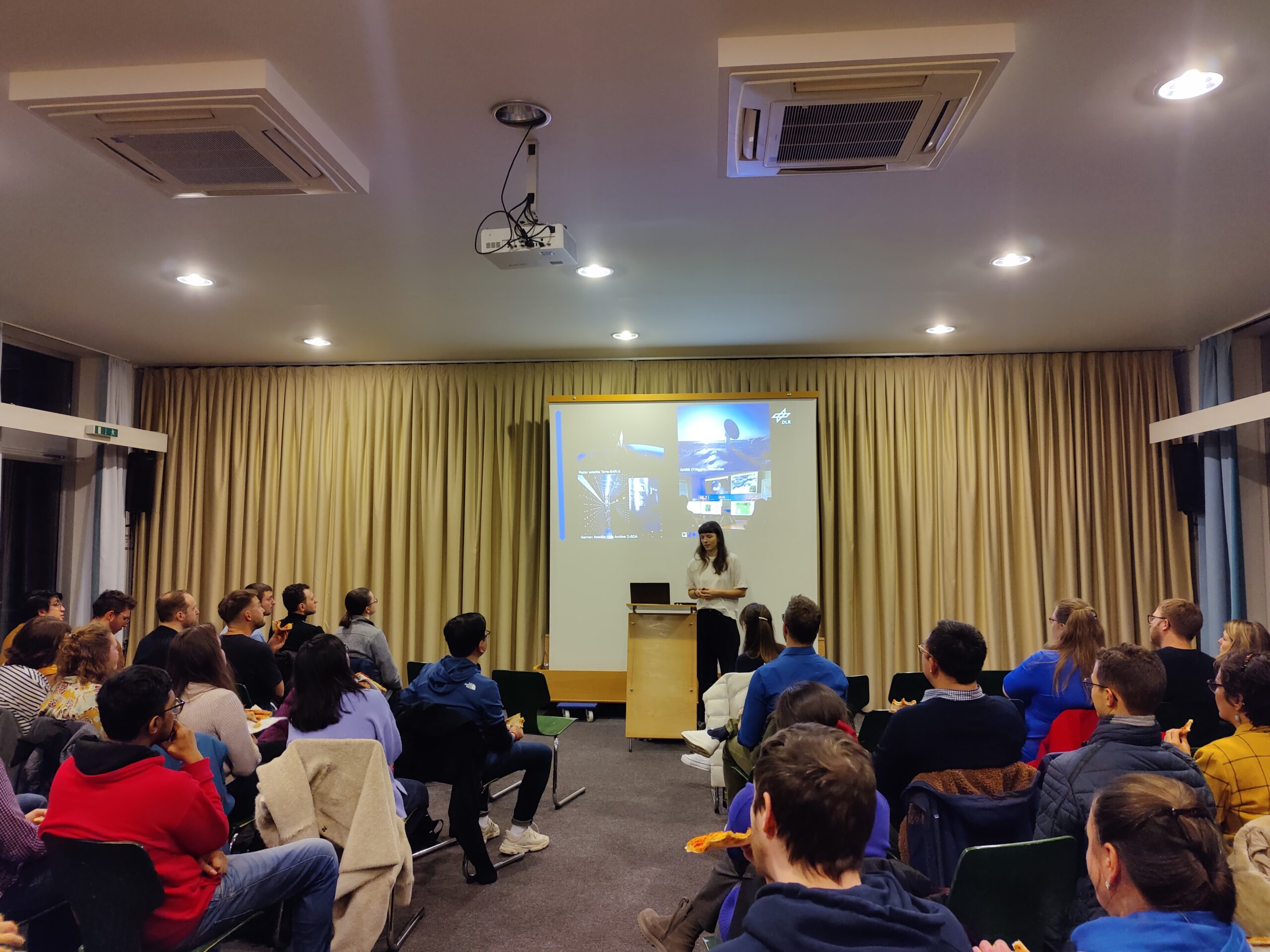
Lyft: How to deal with a new sign?
Another spotlight was on Willi Richert, the engineer manager from ride-sharing giant Lyft. Before sharing, he asked three questions about, whether everyone knows OSM. Not surprised, everyone knows it.
First, Willi introduced their three challenge: driver coming time, cost, and arrival time. These three challenges can only be solved by a sophisticated map.
Willi detailed the sophisticated process they employ to ensure accurate and reliable maps. He have us an exciting and easily understood case: How to update the map when there is a new no-go sign? Willi introduced how they do it in Lyft. This technological synergy aims not only to improve the ride-hailing experience but also to establish a robust framework for rapid response in times of crisis.
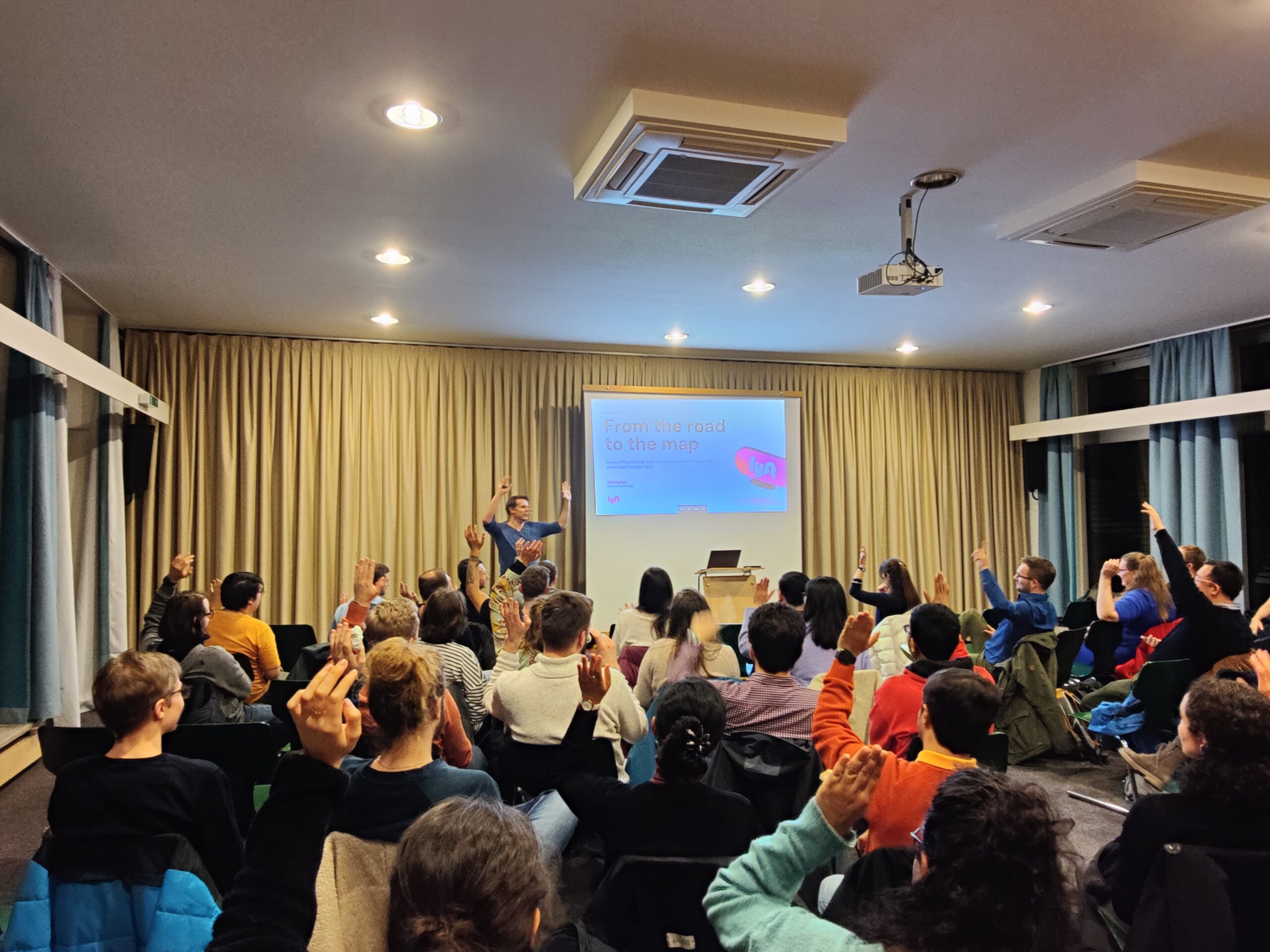
After the engaging panel discussion, audience eagerly bombarded the speakers with fascinating questions.
The meetup kicked off at 7pm and wrapped up at 9pm, followed by some socializing over drinks. Geoawesome meetups offer plenty of time for learning, networking, and sharing exciting project ideas.
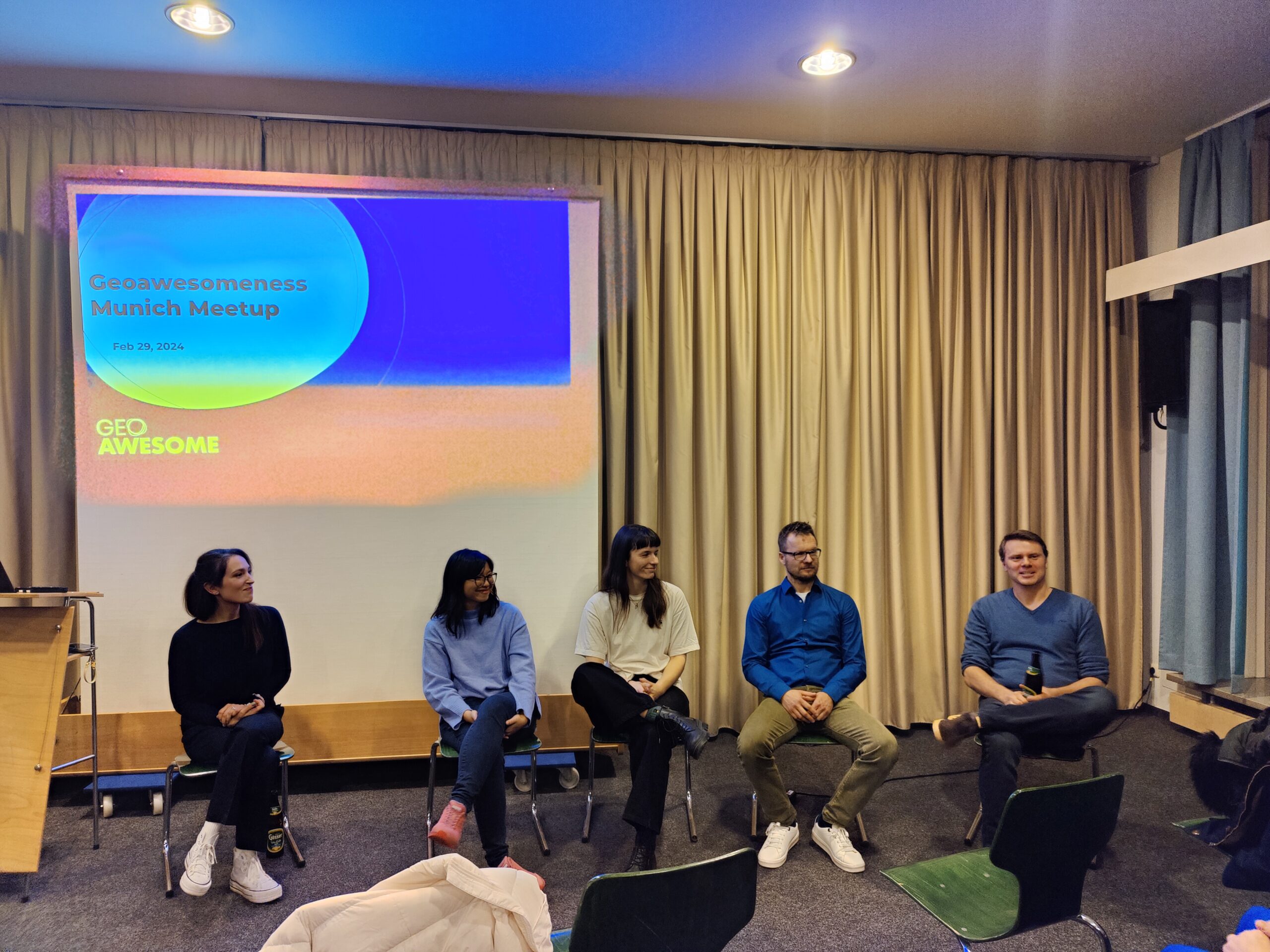
A big thanks to UP42! To find out more about our supporter, visit https://up42.com.
We also want to give a shoutout to our amazing team members, Muthu and Aleks. Keep an eye out for updates on our next awesome get-together and join our lively Munich Geoawesome Community!
Until next time,
Your Munich Geoawesome Team
Abhi, Florian, Sara, Nianhua, Chris, and Karen
Did you like the post? Read more and subscribe to our monthly newsletter!









